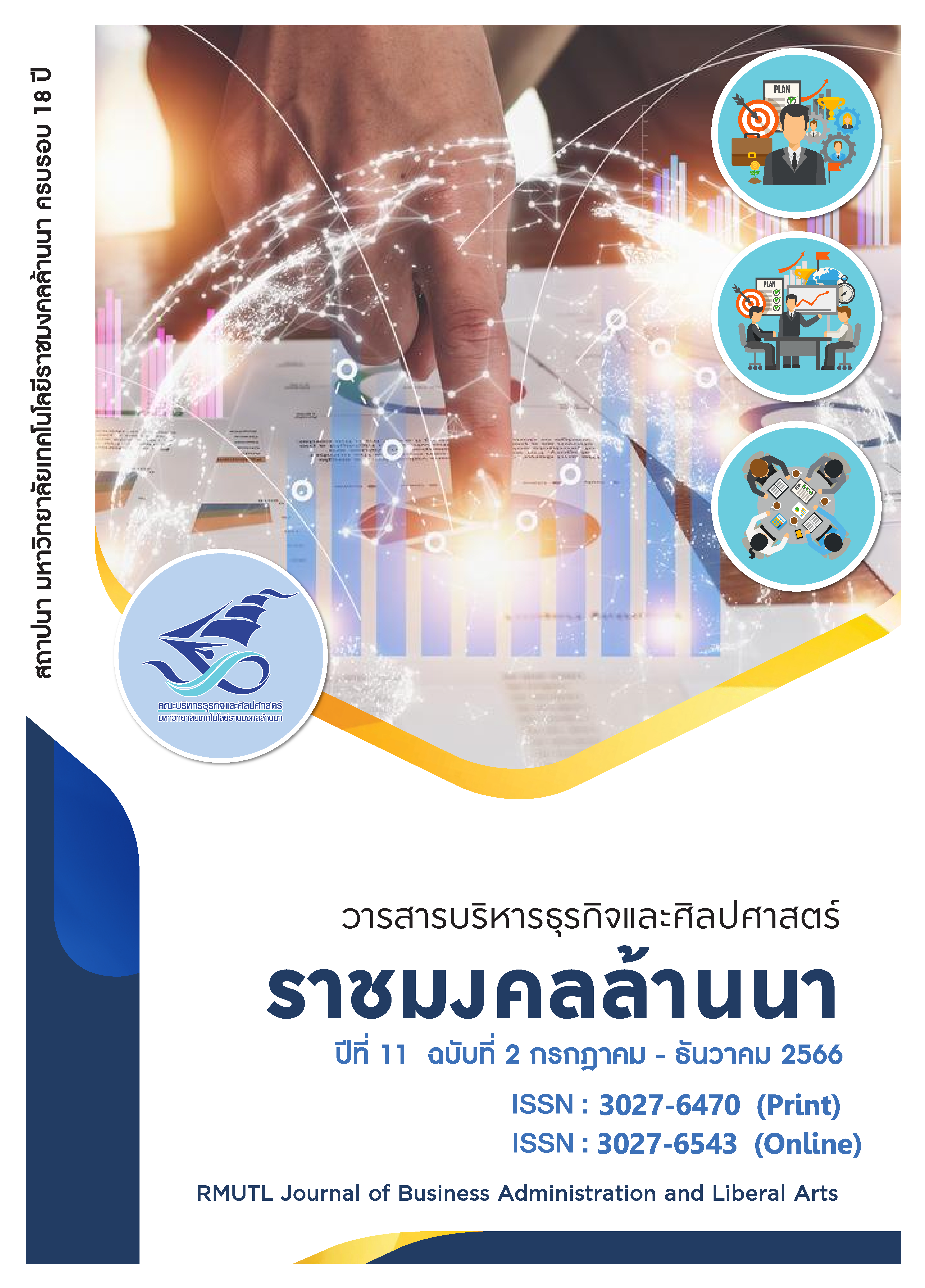Investigating the Factors Affecting to the Restaurant Reservations System Using by Intention of the Northern Taiwan Students
Main Article Content
Abstract
During the COVID-19 pandemic, several eateries around the globe ceased operations. The eateries must use every possible measure to survive in this predicament. In order to augment the quantity of online reservations for each restaurant, the firms must use several techniques. Restaurants may now efficiently handle their reservations and table seating during service by using online reservation tools to create a customized table arrangement specific to their location. This study aims to identify the elements that influence the reservation systems of restaurants by using the Technology Acceptance Model (TAM). The ultimate result of the decision-making process is the creation of a reservation. Understanding the thought process of visitors prior to making a purchase is crucial for fully grasping the effectiveness of an online reservation system in reaching that desired outcome. This study evaluates the system's effectiveness for all consumers by analyzing buying decisions in other industries and their application to the restaurant sector.
Article Details

This work is licensed under a Creative Commons Attribution-NonCommercial-NoDerivatives 4.0 International License.
บทความวิจัยนี้เป็นของลิขสิทธิ์
References
Alharbi, S., & Drew, S. (2014). Using the TAM in Understanding Academics’ Behavioural Intention to Use Learning Management Systems. International Journal of Advanced Computer Science and Applications, 5(1), 143–155.
André, Q., Carmon, Z., Wertenbroch, K., Crum, A., Frank, D., Goldstein, W., Huber, J., van Boven, L., Weber, B., & Yang, H. (2018). Consumer Choice and Autonomy in the Age of Artificial Intelligence and Big Data. Customer Needs and Solutions, 5(1–2), 28–37.DOI: 10.1007/s40547-017-0085-8
Bae, S. Y., & Han, J. H. (2020). Considering cultural consonance in trustworthiness of online hotel reviews among generation Y for sustainable tourism: An extended TAM model. Sustainability (Switzerland), 12(7). DOI: 10.3390/su12072942
Chua, B. L., Karim, S., Lee, S., & Han, H. (2020). Customer restaurant choice: an empirical analysis of restaurant types and eating-out occasions. International Journal of Environmental Research and Public Health, 17(17), 1–23. DOI: 10.3390/ijerph17176276
Davis, Bagozzi, & W. (1989). User Acceptance of Computer Technology: A Comparison of Two Theoretical Models. Management Science, 35(August). DOI: 10.1287/mnsc.35.8.982
Davis, F. D. (1989). Perceived Usefulness, Perceived Ease of Use, and User Acceptance of Information Technology. MIS Quarterly, 13(3), 319–340.
Gregorash, B. J. (2016). Restaurant revenue management: apply reservation management?. Information Technology and Tourism, 16(4), 331–346. DOI: 10.1007/s40558-016-0065-0
Kevin B. Wright. (2005). Researching Internet-Based Populations: Advantages and Disadvantages of Online Survey Research, Online Questionnaire Authoring Software Packages, and Web Survey Services. Journal of Computer-Mediated Communication, 10(3). DOI: 10.1111/j.1083-6101.2005.tb00259.x
Kimes, S. E. (2011). The Current State of Online Food Ordering in the U.S . Restaurant Industry. Cornell Hospitality Report, 11(17), 6–18.
Lin Yi-Ling, Y. L., & Lee, T. J. (2010). The impacts of the online reservation system in London city hotels. Journal of Hospitality Marketing and Management, 19(1), 82–96. DOI: 10.1080/19368620903327832
Messabia, N., Fomi, P. R., & Kooli, C. (2022). Managing restaurants during the COVID-19 crisis: Innovating to survive and prosper. Journal of Innovation and Knowledge, 7(4), 100234. DOI: 10.1016/j.jik.2022.100234
Morosan, C., & Jeong, M. (2008). Users’ perceptions of two types of hotel reservation Web sites. International Journal of Hospitality Management, 27(2), 284–292. DOI: 10.1016/j.ijhm.2007.07.023
Park, S. Y. (2009). An analysis of the technology acceptance model in understanding University students’ behavioral intention to use e-Learning. In Educational Technology and Society, 12(3).
Pavlou, P. A. (2003). Consumer Acceptance of Electronic Commerce : Integrating Trust and Risk with the Technology Acceptance Model. INTERNATIONAL JOURNAL OF ELECTRONIC COMMERCE, 7(3), 101–134. DOI: 10.1080/10864415.2003.11044275
Phongphaeo, W., & Pinta, L. (2021). Factor Effect to Customer Acceptance Towards e-Payment System : A Case Study in Chiang Mai. RMUTL Journal of Business Administration and Liberal Arts, 9(1), 1–10.
Viswanath Venkatesh, Michael G. Morris, G. B. D. and F. D. D. (2003). User Acceptance of Information Technology: Toward a Unified View. MIS Quarterly, 27(3), 425–478.
Zhao, Y., Wang, H., Guo, Z., Huang, M., Pan, Y., & Guo, Y. (2022). Online Reservation Intention of Tourist Attractions in the COVID-19 Context: An Extended Technology Acceptance Model. Sustainability (Switzerland), 14(16). DOI: 10.3390/su141610395

